Shaolin Kung Fu Films
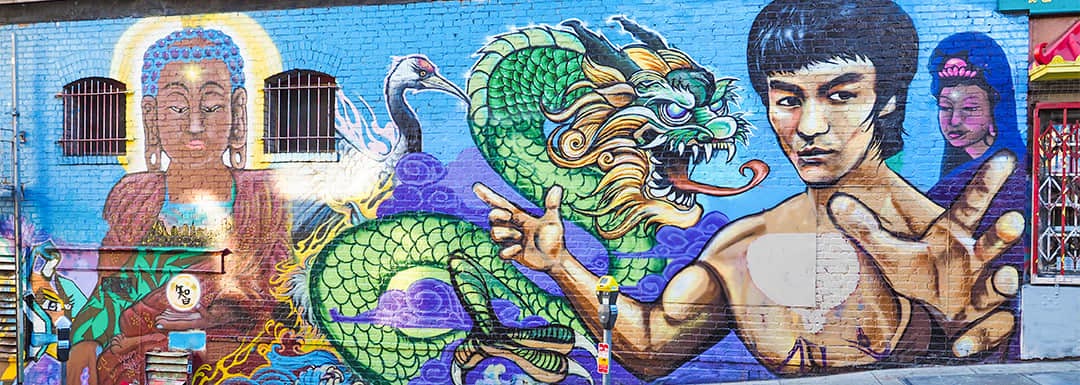
The History of Kung Fu Films
The presence of Kung Fu in the world of cinema was established as early as the rolling film tape was paving its way into the hearts and imagination of the Chinese population. Zhang Shichuan, one of the early pioneers directed the longest film that was ever made: The burning of the red lotus temple. Between 1928 and 1931, in 18 instalments, each lasting a total of 27 hours, this film was the first attempt to bring martial arts and specifically Wuxia literary epic genre to the screens. By the late thirties, the Kung Fu genre broke away from Wuxia-themed fantasy aesthetics as these came to be associated with poorly made effects and cheap, cliché plots. A new genre substituted these with more realistic unarmed fights, as well as other characteristics which featured an absence of phantasmagoric elements, a focus on Shaolin Kung Fu styles and tragedy, an emphasis on detail in the costumes, and took place in settings which were contemporary or had some relevance to the present. Furthermore, for early Kung Fu filmmakers, anti-colonial folk heroes such as Wong Fei-hung and his fighting exploits were a popular source of inspiration. The birth of this new genre also coincided with the Japanese invasion, war as well as the subsequent relocation of the industry’s center from Shanghai to Hong Kong.
Generally speaking, the Kung Fu genre kept a relatively low profile until its resurgent boom in the seventies, which was in great part triggered by the rise of the young martial artist Bruce Lee, who quickly came to internationally personify the entire genre and following, became a global icon in pop culture. Despite only featuring in a few movies prior to his premature death at the age of 32 only (1973), thanks to him, Kung Fu gained popularity worldwide. And while the 70s is considered as the golden era of Kung Fu films, the incorporation of Kung Fu within the broader film genres of ‘action’ and ‘comedy action’ in the following decades, with actors like Jackie Chan and Jet Li becoming the cover face of martial arts, and finally in recent years, Donnie Yen’s portrayal of the Wing Chun master, IP Man, meant that Kung Fu soon established itself in even the mainstream of the West, embraced by hundreds of thousands cinema fans around the world.
In this article, we have put together a list of the five of the best and most influential Kung Fu films of all time by chronological order: Enter the Dragon (1973), the 36th Chamber of Shaolin (1978), Drunken Master (1978), Fist of Legend (1994) and Ip man (2008).
Top 5 Shaolin Kung Fu Movies
Enter the Dragon (1973) 龙争虎斗/龍爭虎鬥 lóng zhēng hǔ dòu
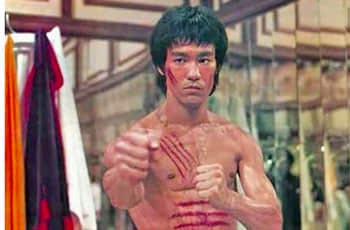 Bruce Lee in the movie of Enter the Dragon
Bruce Lee in the movie of Enter the Dragon
The last and, by many accounts, the best film starring Bruce Lee, Enter the Dragon has, ever since its release, been one of the most loved and critically acclaimed films of Kung Fu. Consisting of an effort bringing U.S. and Hong Kong studios together to diffuse Bruce Lee’s ‘silver screen charisma’ and his incredible Kung Fu skills to larger international audiences, the film also showcases two distinguished martial artists, John Saxon and Jim Kelly, the three actors fighting their ways out of a spectacle of fast-paced martial art showdowns.
In the film, Lee plays the role of a Shaolin Kung Fu master who is invited to participate in a high-profile tournament on an unnamed fortified island, which belongs to a Han, a drug lord suspect, whose bodyguard is responsible for the death of Lee's sister. As the story unravels, Lee fights his way through the competition, and investigates Han’s drug involvement. The ending encounter, which takes place in a mirror room between Lee and Han, is said to be one of the most memorable moments in the history of Kung Fu film.
The 36th Chamber of Shaolin (1978) 少林三十六房 shǎo lín sān shí liù fáng
Set in the early 18th century, this cult Kung Fu film follows the life of a young student named Liu Yude as he ventures into local politics and joins the rebellion against the rulers of the Qing Manchy, and the way in which his life crumbles as he is forced to flee after the rebellion is crushed. As many of his friends and family members are killed, the audience witnesses his eventual comeback as a renown Shaolin Kung Fu master, changing his name to teacher Sao Te, one of the legendary figures in Shaolin Kung Fu folklore.
The film storyline follows the classic hero narrative of an underprivileged and downtrodden character who rises from the ashes, driven by his own will-power and desire for vengeance. Well-known for its depiction of the Shaolin monastic life and the aura that surrounds it, the film’s name bears its most significant statement. Indeed, the Shaolin Monastery had thirty-five chambers each of these being dedicated to the learning of a different aspect of the martial art. In the movie, Sao Te introduces the 36th chamber as a chamber in which ordinary outsiders are allowed to enter to learn and train in Kung Fu practice. Hence, this reference counts as a symbolic ode to all to all those who helped to disseminate and democratize Kung Fu.
Drunken Master (1978) 醉拳 zuì quán
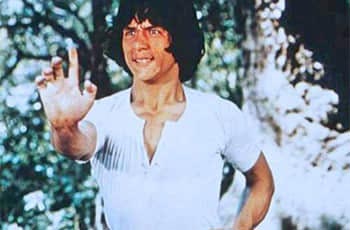 Jackie Chan in the film of Drunken Master
Jackie Chan in the film of Drunken Master
In the cinema world, the Kung Fu equivalent of Sherlock Holmes and Count Dracula is without doubt, Wong Fei-hung, a character which has featured in an astonishing number of films and television adaptations. Amidst a hundred and twenty-three different on-screen appearances, the Wong Fei-hung depicted in Drunken Master is, according to some critics, perhaps the most colorful and entertaining one. Starring the young and ambitious Jackie Chan (whose fame is in part due to the role he adopts in the movie), the story depicts the relationship between Wong Fei-hung, a martial art student and his uncle, a heavy-drinker and Kung Fu master. Following the movie, this specific student-master type of relationship became a cornerstone of American cinematic adaptations of martial arts.
Drunken Master begins featuring Wong Fei-hung running away from his master and his grinding, back-breaking training, who only returns after getting himself into trouble with some brutes who are after him. Aside of the slapstick comedy elements -which cinema introduced to the Kung Fu genre and expanded its audience- which became a trademark of Jackie Chan’s career, this film is most particularly remembered for its notable fight scenes as well as the popularization of the Hung Ga style of the Southern and Shaolin classifications.
Fist of Legend (1994) 精武英雄 jīng wǔ yīng xióng
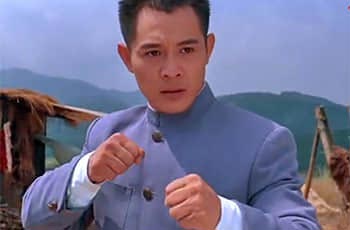 Jet Li
Jet Li
A remake of Bruce Lee’s vintage Fist of Fury, Fist of Legend cemented Jet Li’s reputation as one of most talented martial artists out there. Endowed with a down-to-earth coolness, Jet Li takes the role of a Chinese student studying in Japan during a time of hostile low point between the two countries, who faces constant prejudice and racial bigotry. It’s 1937, and his master has died after losing a match against a Japanese Kung Fu champion in the occupied part of Shanghai. Upon returning to Shanghai, he finds out that his master has actually been poisoned. Amid the escalating war, culminating tensions and rivalries between the Chinese and the Japanese, and at the heart of a ferocious, epic fighting finale choreographed by the celebrated Yuen Woo-ping, Jet Li defeats the man who killed his master, the vicious general Fujita. This scene will boost Yuen Woo-ping’s career, and lead him to later work on the Matrix series, Kill Bill, the Crouching Tiger and Hidden Dragon. With its abundance of fighting scenes coupled with an intriguing, well-rounded plot and Jet Li’s placid temperament, Fist of Legend stands out as one of the best Kung Fu movies ever produced.
Ip Man (2008) 叶问/葉問 yè wèn
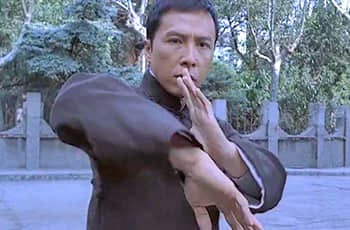 Donnie Yen
Donnie Yen
Ip Man plays out in the same historical context of turbulence, hatred and conflict with the Japanese as above. Only, it is a biographical account of the life of Ip Man, who is Bruce Lee’s teacher as well as a venerated Cantonese martial art master. The story narrates how the Japanese appropriated Ip Man’s home in Fushan, who is then forced to seek employment to be able to bring food on the table. As the Japanese general Miura organizes martial art fights between the Chinese and Japanese, Ip Man finds himself forced into one of these as he seeks revenge for one of his colleagues who passed away in a fight. During breathtaking fighting sequences, Ip Man faces off a gang of local villains and the Japanese Miura, in a bid to save a local mill, defend the pride of the Chinese and galvanize resistance against the Japanese occupation. Beautifully directed, and showing an structural maturity (the pace, scenario, technical details) which is often absent in the early films of the genre, Ip Man is an eye-pleasing praise of Kung Fu skillset as well of its ethics of humility and respect.
OR
Are you eager to begin your Chinese cultural journey?
Drop us a line and we will promptly connect you with our leading China expert!
 How to Choose a pair of Chopsticks?
How to Choose a pair of Chopsticks? 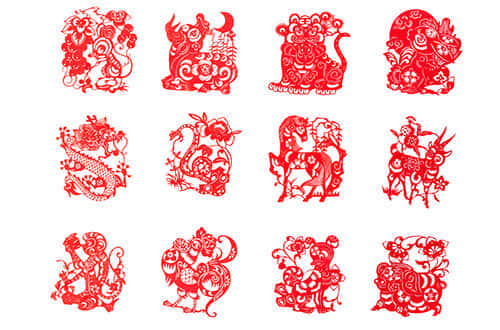 Chinese Zodiac
Chinese Zodiac  China Packing Tips
China Packing Tips  Dumplings in Movies
Dumplings in Movies